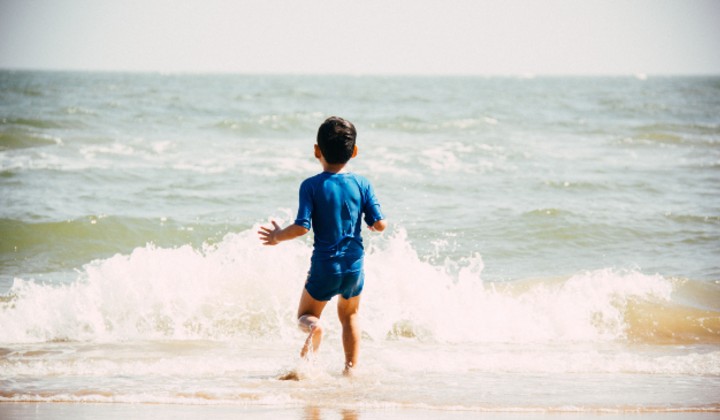Parents, Keep Your Kids Safe In The Water This School Holidays

Every year the authorities would release a list of high-risk drowning areas around the country.
In 2019, 6 hotspots were identified involving 5 rivers in Kedah, Perak and Sabah, as well as a waterfall in Terengganu where 14 deaths had been recorded.
In Malaysia, there is at least one drowning fatality per day and its the 3rd highest cause of death among children, with more than 400 drowning-related deaths in 2018 alone and around 700 deaths annually over the last decade.
The majority of these cases involve children, with data from the Department of Statistics in 2018 shows that drowning accounts for 2.8% of the total cause of death of youths under the age of 14.

The drowning death toll tends to increase during school and public holidays, weekends and during bouts of erratic weather like what the country usually experiences during the monsoon seasons.
Given that water recreational activity is a rather popular pass time in Malaysia, here are some basic tips on how you can have a safe and pleasant aquatic experience:
1. Teach your kids (and yourself) how to swim
Not only is swimming fun and a great form of exercise, but it is also considered as the only sport that can save your life.
The World Health Organisation (WHO) lists drowning as the 3rd leading cause of unintentional deaths worldwide and relates it to poor or total lack of swimming skills.

Regardless of your access or proximity to water (pools, rivers, lakes, oceans, etc.), swimming is a necessary skill that everyone must learn, especially children. Even the Education Ministry had endorsed the importance of swimming as something that needs to be taught in schools.
2. Be aware of where you are
Whether you’re taking a dip in the river or kayaking in the open ocean, it’s always important to have some knowledge of the area you are in.
According to the Fire and Rescue Department, drowning victims are normally outsiders or non-locals who are unfamiliar with an area.

It’s best to be mindful of where you are when you choose to go into the water and only go to areas designated for swimming and recreational activities.
It’s also crucial to always obey the warning signs and instructions provided in a specific area as water can bring serious peril to those who are unaware of their surroundings and to remember that a body of water might look calm on the surface but it can hide fast-moving and often deadly currents and obstacles.

Changes in the weather, sudden changes in-depth, strong currents and tides, as well as underwater structures, can put your life in danger if you are not cautious. And some areas might also be home to dangerous marine creatures like crocodiles, jellyfish and sharks that may threaten lives.
3. Never let your kids go swimming alone
It’s dangerous to go alone! Especially in areas where there are no lifeguards available.
Parents should always supervise children in and around water at all times and as a general rule of thumb, a child must always be within an arm’s reach when playing with water even when they have floaties on as it can easily puncture and flip over.

A similar rule also applies to adults, where it is always good to have a buddy around and on the lookout if anything were to go wrong.
4. Don’t fool around
As you should probably know by now, water can be a very dangerous environment. And although the notion of water recreation is to have fun, too much fun can put lives at risk.
Never endanger your life or the life of others to play silly games such as play fighting, holding someone’s head underwater, or dragging someone who doesn’t know how to swim to deep waters as it can be very dangerous especially if a person were to panic.

It is also crucial to avoid being intoxicated while in the water. Alcohol and drugs not only mess with your perception, judgment and coordination. It can also screw up your body’s processes like breathing and temperature regulation which can cause serious injuries even death.
5. Don’t be a hero
While it may be a parental instinct to try and save a child (or adult) who is drowning. Experts agree that you should never attempt to directly rescue a victim without proper training.
People who are drowning are more than likely to be in a state of panic and hysteria, and there have been numerous accounts of drowning victims dragging their would-be-rescuers down together with them to a watery grave.
Experts advise using the “reach and throw” technique when trying to save a drowning victim which involves using a long object like a pole or rope, to reach the victim and pull them to safety, or throwing a flotation device that the victim can hold on to keep themselves afloat till help arrives.

6. Learn CPR
The undeniable truth is that accidents do happen, but knowing what to do in tense situations, like how to perform CPR (cardiopulmonary resuscitation), can be the difference between life and death.
There are a number of courses available around the country where you can learn basic emergency and life support techniques that can and always be useful in a tight spot.
If you have more water safety tips to share, hit us up on our Facebook, Twitter and Instagram.
Typing out trending topics and walking the fine line between deep and dumb.





